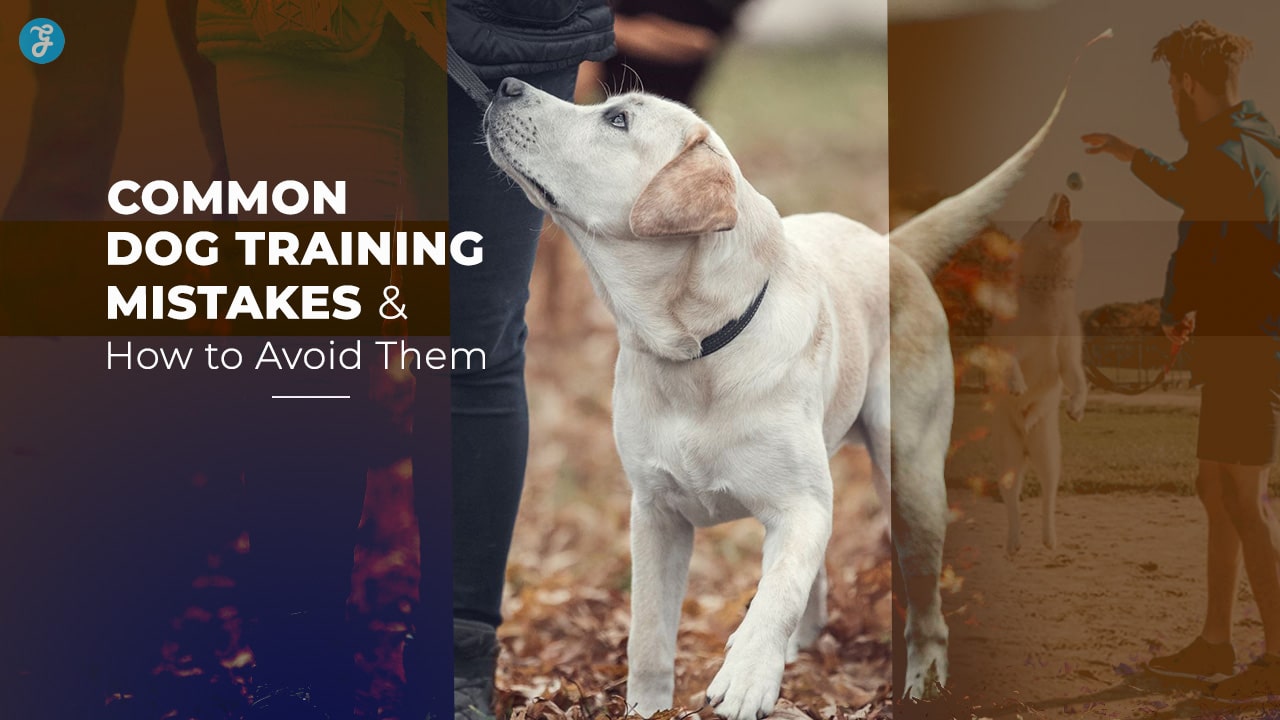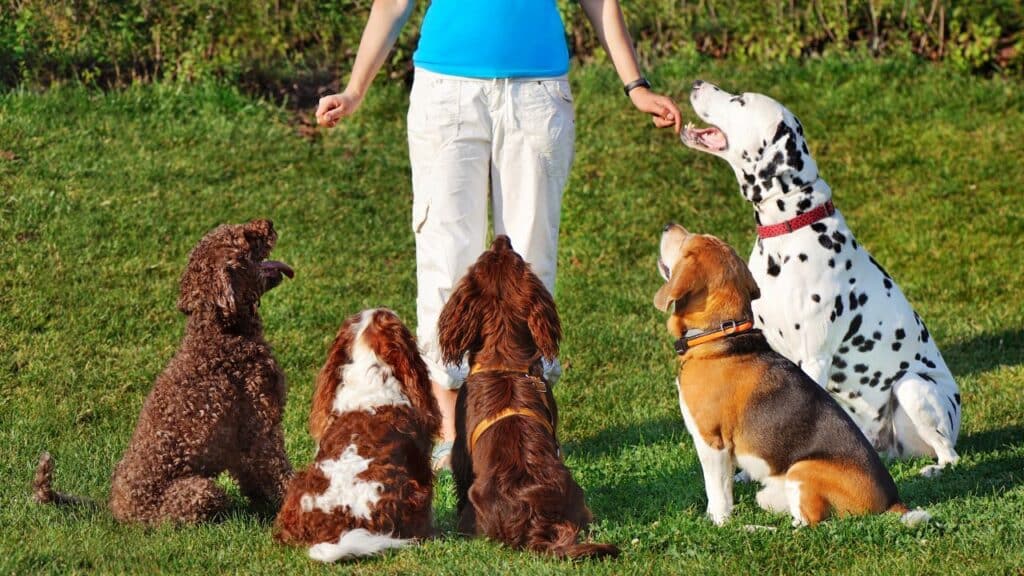Training a dog is one of the most rewarding experiences for pet owners. A well-trained dog is not only a joy to have but also develops a strong bond with its owner. However, dog training can be challenging, especially if you’re new to it.
Many pet parents unknowingly make common mistakes that can slow down their dog’s progress or cause behavioral issues.
Understanding these mistakes and learning how to avoid them is essential for effective dog training. This article will discuss the 8 most common dog training mistakes and provide actionable tips to ensure success.
Whether you are training a new puppy or an older dog, avoiding these pitfalls will help you achieve better results and foster a healthier relationship with your furry companion.
1. Inconsistent Training
Why It’s a Mistake
Consistency is key when it comes to training dogs. Dogs thrive on routine and clear signals. If you are inconsistent with commands, rewards, or rules, it can confuse your dog and hinder progress.
For example, if you sometimes allow your dog on the couch but scold them other times, they will struggle to understand what’s expected.
How to Avoid This Mistake
- Establish Clear Rules: Decide on the rules you want to enforce and stick to them.
- Be Consistent with Commands: Use the same words and gestures for each command. For instance, if you say “Sit”, don’t switch to “Sit down”.
- Involve All Family Members: Ensure everyone in your household follows the same rules and commands.
- Reinforce Training Daily: Even short daily sessions help reinforce good behavior.
Example of Inconsistent vs. Consistent Training
| Behavior | Inconsistent Approach | Consistent Approach |
| Jumping on Furniture | Allowed some days, scolded on others | Never allowed at any time |
| Commands (Sit) | Sometimes “Sit”, other times “Sit down” | Always use “Sit” |
| Leash Pulling | Ignored during short walks, scolded later | Addressed every time immediately |
By being consistent, your dog will learn faster and have a clear understanding of acceptable behavior.
2. Using Negative Reinforcement
Why It’s a Mistake
Negative reinforcement, such as shouting, hitting, or using shock collars, can create fear and anxiety in dogs. This type of training damages trust and may result in aggressive or withdrawn behavior.
Dogs respond better to positive reinforcement, where good behavior is rewarded with praise, treats, or toys.
How to Avoid This Mistake
- Focus on Positive Reinforcement: Reward your dog when they follow commands or exhibit good behavior.
- Avoid Punishment: Instead of scolding bad behavior, redirect your dog’s attention to something positive.
- Be Patient: Training takes time, and dogs learn better through encouragement than punishment.
- Use Treats or Toys: Small treats or favorite toys can be powerful motivators during training.
Example: Positive vs. Negative Reinforcement
| Situation | Negative Reinforcement | Positive Reinforcement |
| Chewing Furniture | Shouting or hitting | Offering a chew toy and praise |
| Not Coming When Called | Scolding or leash tugging | Rewarding with treats for coming |
| Pulling on the Leash | Yanking the leash aggressively | Treats for walking calmly |
Using positive reinforcement builds trust and strengthens your bond with your dog.
3. Skipping Basic Obedience Training
Why It’s a Mistake
Basic obedience training is the foundation for all advanced training and good behavior. Skipping it can lead to a lack of control and communication between you and your dog.
Without basic commands like “Sit”, “Stay”, and “Come”, your dog may become difficult to manage in different situations.
How to Avoid This Mistake
- Start with Core Commands: Focus on basic commands like Sit, Stay, Down, Come, and Leave It.
- Use Positive Reinforcement: Reward your dog when they follow a command correctly.
- Keep Sessions Short: Dogs have short attention spans, so keep training sessions 5-10 minutes long.
- Practice Daily: Reinforce basic commands regularly to ensure your dog remembers them.
Table: Basic Commands Every Dog Should Learn
| Command | Purpose |
| Sit | Keeps the dog calm and still |
| Stay | Ensures the dog stays in one place |
| Come | Helps with recall and control |
| Down | Encourages calm and submissive behavior |
| Leave It | Prevents the dog from grabbing things |
Mastering these basic commands will set the stage for further training and better behavior management.
4. Training for Too Long
Why It’s a Mistake
Dogs have limited attention spans, especially puppies or high-energy breeds. Long training sessions can cause frustration, boredom, and resistance.
Overtraining can result in your dog ignoring commands altogether.
How to Avoid This Mistake
- Keep It Short: Train in 5-15 minute increments, depending on your dog’s age and energy level.
- End on a Positive Note: Stop each session after your dog successfully follows a command or exhibits good behavior.
- Use Frequent Breaks: Give your dog breaks to rest and play between training sessions.
- Be Observant: Watch for signs of boredom or stress, such as yawning, sniffing the ground, or walking away.
Tips for Effective Training Sessions
- Train multiple short sessions throughout the day instead of one long session.
- Use a variety of rewards like treats, toys, or verbal praise to keep your dog engaged.
- Change locations occasionally to help your dog learn to follow commands in different environments.
5. Lack of Socialization
Why It’s a Mistake
Socialization is crucial for helping dogs feel comfortable in various environments and with other animals or people. A lack of socialization can result in fearful, aggressive, or anxious behavior.
Puppies that miss the critical socialization window (up to 16 weeks of age) may struggle with adapting to new experiences.
How to Avoid This Mistake
- Start Early: Begin socializing your dog as early as possible.
- Expose to New Situations: Gradually introduce your dog to new sounds, sights, smells, and experiences.
- Meet Other Dogs and People: Arrange safe, controlled interactions with other dogs and friendly humans.
- Reward Calm Behavior: Praise or reward your dog when they behave calmly in new situations.
Table: Key Socialization Activities
| Activity | Benefits |
| Meeting Other Dogs | Reduces fear and aggression |
| Visiting Parks or Cafes | Builds confidence in public spaces |
| Car Rides | Helps with travel-related anxiety |
| Exposure to Loud Noises | Prevents fear of unexpected sounds |
Proper socialization will ensure your dog grows up to be confident and well-adjusted.
6. Over-Reliance on Treats
Why It’s a Mistake
Using treats to motivate your dog is effective, but over-relying on treats can lead to dependency. Your dog may follow commands only when treats are visible, ignoring cues otherwise.
How to Avoid This Mistake
- Gradually Reduce Treats: Start by giving treats consistently, then gradually decrease their frequency.
- Use Alternative Rewards: Incorporate verbal praise, petting, and favorite toys as rewards.
- Randomize Treat Use: Give treats intermittently so your dog doesn’t expect them every time.
- Focus on Intrinsic Motivation: Encourage your dog to respond to your happiness and approval.
7. Not Addressing Behavioral Issues Early
Why It’s a Mistake
Minor behavioral problems, like barking, chewing, or playful biting, may seem harmless initially, but ignoring them can turn these issues into serious problems over time. For example, a puppy’s biting during play can develop into aggressive behavior as an adult dog if not addressed early.
Dogs are quick learners, and undesirable behaviors can become habits if left unchecked. Addressing these issues early prevents them from escalating and ensures a well-behaved dog.
How to Avoid This Mistake
- Identify Early Signs: Observe your dog for behaviors like excessive barking, leash pulling, chewing furniture, or jumping on people.
- Redirect Bad Behavior: Offer alternatives when your dog misbehaves. For example, if your puppy chews shoes, redirect them to chew toys.
- Reinforce Good Behavior: Reward your dog when they exhibit the correct behavior instead of focusing solely on what they did wrong.
- Seek Professional Help: If a behavioral issue persists, consult a professional dog trainer or animal behaviorist to identify the cause and proper solutions.
Addressing issues early ensures that small problems do not turn into major challenges later.
8. Ending Training on a Negative Note
Why It’s a Mistake
If a training session ends with frustration, your dog may associate training with negativity and resist future sessions. Dogs are sensitive to their owner’s emotions, and when they sense frustration, it can affect their enthusiasm for learning.
Training should always be a positive experience to keep your dog motivated and eager to participate.
Ending on a negative note can undo the progress made during a session and create stress for both you and your dog. It may also lead to disobedience or reluctance to engage in future training sessions.
How to Avoid This Mistake
- End Positively: Finish every training session with a simple command your dog knows well, such as “Sit” or “Stay”. Successfully completing an easy task boosts your dog’s confidence.
- Celebrate Small Wins: Acknowledge small achievements by rewarding your dog with treats, verbal praise, or a fun play session.
- Stay Calm and Encouraging: If you feel frustrated, take a break. Keep a positive tone and be patient with your dog’s progress.
- Keep It Fun: End the session with something your dog enjoys, like a short game of fetch or some belly rubs, to leave them feeling happy and motivated.
Example: Ending on a Positive Note
| Scenario | Negative Ending | Positive Ending |
| Dog struggles with “Down” | Owner scolds dog and ends session | Owner asks for “Sit”, rewards success |
| Poor leash walking | Owner yells and pulls dog inside angrily | Owner gives praise for calm sitting |
| Failed recall attempt | Owner leaves dog alone in frustration | Owner calmly calls and praises for effort |
By ensuring training sessions always end on a positive note, you create an enjoyable learning environment that encourages your dog to keep trying.
Final Thoughts
Training your dog requires patience, consistency, and understanding. By avoiding these 8 common dog training mistakes, you can build a stronger bond with your furry friend and set them up for long-term success.
Whether it’s using positive reinforcement, addressing behavioral issues early, or ending training sessions on a high note, each small step contributes to a well-behaved and happy dog.
Focus on making training sessions fun, rewarding, and consistent. With time, effort, and love, your dog will not only learn good behaviors but also become a cherished and joyful part of your family.







































